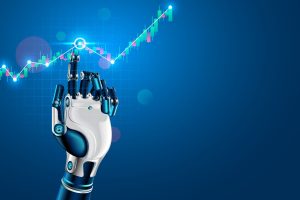“The age of the 3,000-mile Caesar salad is coming to an end,” futurist author James Howard Kunstler predicted almost two decades ago.
At first blush, the declaration is a bit confusing. But Kunstler was on to something.
His metaphorical Caesar salad represented any product – or any lifestyle choice – that would not be able to exist without the cheap energy that makes long supply chains feasible.
Americans, Kunstler predicted, would be forced to become “locavores” – consumers of locally produced foods.
“Places that will be successful in the future,” he said, “[will be ones] that have some kind of meaningful relationship to food production, because we’re going to have to grow a lot more of our food locally.”
For Kunstler, the Caesar salad was a “3,000-mile” culinary event because most of the nation’s romaine lettuce came from California – 3,000 miles away from where he was living in New York.
But actually, the typical Caesar salad travels a lot farther than 3,000 miles, even if you happen to be consuming it in the middle of a romaine lettuce field in California.
In order to prepare a traditional Caesar salad in a Los Angeles eatery, the anchovies and anchovy paste must first travel 6,000 miles from Morocco, while the Dijon mustard, Worcestershire Sauce, and Parmigiano-Reggiano cheese must also make 6,000-mile journeys from European locales.
Even if they all hitched a ride together, that’s a lot of frequent-flier miles for just one appetizer. But we don’t need to single out Caesar salads to make Kunstler’s point.
- New Zealand raspberries make an 8,200-mile journey to become an off-season delicacy in a Chicago supermarket.
- Australian lobster tails travel 10,500 miles to become the “surf” half of a “surf and turf” entrée at Nick & Sam’s steakhouse in Dallas.
- Darjeeling tea must make an 8,000-mile trek from West Bengal, India before it can warm and recharge skiers on the slopes of Vail.
But these well-traveled foodstuffs are just one small part of the energy-intensive American lifestyle…
The U.S. Armed Forces Neutralized… with One Phone Call?
The United States Airforce: Grounded.
The United States Navy: Helpless.
And the United States Army: Neutralized…
All with one phone call.
That might be hard to believe… But that’s the cold reality right now. Because China has the Ultimate Weapon pointed directly at the United States.
Get the shocking details here.
American Folklore
Because of cheap energy and relatively frictionless supply chains, Kunstler argued, Americans have been able to construct and inhabit suburbs that are far from sources of food production and often far from places of employment as well.
I know that drill, firsthand.
During my years in New York, I spent four hours per day riding trains and subways from my suburban home in Westchester County to my office on Wall Street. That lengthy commute was not an oddity. I rubbed shoulders with many other folks who did the same thing every single workday.
Kunstler’s exact predictions have not yet come to pass, of course.
Suburbia is still with us, but that doesn’t mean he was way off target. In fact, the essence of his prediction was spot-on: Long-distance supply chains can be unreliable, risky… and expensive.
According to an oft-repeated corporate mantra, “Offshore production is cheaper than made-in-America.” That assertion seemed so obvious for so many decades that almost no one, besides Kunstler, ever dared to question it.
But today, that ancient corporate mantra seems much less obvious… or even true. In fact, it is close to joining the catalog of American folklore, alongside Paul Bunyan and his blue ox, Babe.
To be sure, some forms of offshore production are cheaper than domestic alternatives, but many are not… especially after including the intangible cost of unreliability.
Imagine running a high-end steakhouse supplied by a “low-cost” butcher who faithfully delivered your steaks and chops every morning, except for the times when he unpredictably skipped a week or two.
Or even more absurdly, imagine waging war with a low-cost bullet supplier who usually delivered them on time but sometimes put your deliveries on backorder.
We don’t have to imagine these kinds of scenarios because they’ve been happening ever since the COVID pandemic started blowing apart global supply chains three years ago.
Made in America 2.0
During that stressful episode, American corporations learned that there is nothing cheap about not knowing if critical production inputs will arrive on time. Broken supply chains can cause crippling production delays, multibillion-dollar losses, and/or lost market share.
In general, global supply lines are functioning normally once again. But they will never be the same… or, at least, we will never trust them like we used to. The entire world has learned, or should have learned, that far-flung supply chains are risky supply chains.
They continuously face three key threats…
- Geopolitical stresses or crises, like when countries impose punitive tariffs during trade wars or implement crippling sanctions during actual wars…
- Rising transportation costs, like when fuel prices or shipping container prices soar…
- And sclerotic transportation supply lines, like when the average time a cargo ship sits at anchor waiting to unload at L.A.’s Port of Long Beach triples from seven days to 21.
No U.S. company can afford to ignore these risks any longer. The era of unfettered globalization is over, and it’s now reversing course towards something less global.
This reversal is called deglobalization… and this week, we’re going to dive deep into this megatrend that I’ve alluded to over the last month.
Gone are the days when “Made in China” or “Made in Somewhere Else” is stamped on almost everything we purchase…
“Made in America” is making a comeback.
As a result, a shocking new “Epicenter of Wealth” could create abundant investment opportunities for years to come.
After a staggering amount of research, late nights, and more than a few trips to various corners of the U.S.…
I’m finally ready to unveil the exact implications of this massive, multiyear megatrend.
Go here now to get the details.
Regards,
Eric
P.S. Plus, just for viewing my presentation on the new “American-made” megatrend, you’ll also get my No. 1 pick in this space for free.




